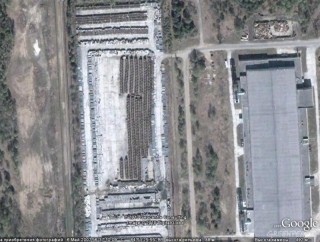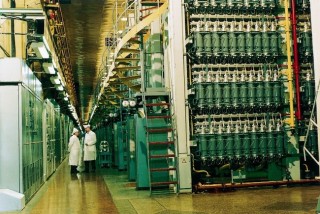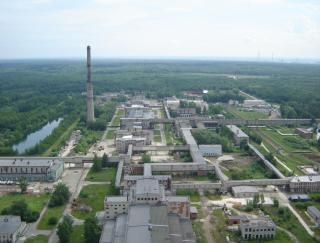
Norway’s environmental prosecutor fines Equinor a record amount following Bellona complaint
Økokrim, Norway’s authority for investigating and prosecuting economic and environmental crime, has imposed a record fine on Equinor following a comp...
News

Publish date: September 17, 2014
Written by: Andrey Ozharovsky
News
TOMSK, Russia – Earlier this month, the closed nuclear city of Seversk near Tomsk conducted public hearings on building a new uranium hexafluoride plant, during which the usual approach of not publishing the materials under discussion and fettering expert opinion and the public’s access to the hearings was the rule.
Earlier, Russian media, namely the official government mouthpiece Rossiiskaya Gazeta, published announcements about the “public discussion (in the form of public hearings) of materials substantiating the licensing for implementing activities in the nuclear energy field (including environmental impact materials) by the Siberian Chemical Combine [SCC]” with the object of “creating new conversion facilities at [the combine.]”
What is implied by the phrase “conversion facilities,” of course, is the production of uranium hexafluoride , UF6, a substance dangerous not only because of its radioactive uranium content, but also because of its chemical composition. Uranium hexafluoride at above 57 degrees Celsius turns into gas and is used in centrifuges for uranium enrichment. According to current data, the SCC already has uranium hexafluoride at its evaporator plant. Spent uranium hexafluoride, so called uranium tails, have previously been brought to the Siberian Chemical Combine from Germany and France.

This dangerous substance is stored in metal containers in the open air. Numerous environmental groups, including Bellona, pointed out that this was tantamount to importing nuclear waste into Russia, and persuaded Germany to halt its import of uranium tails.
In the announcements on the hearing conducted earlier this month, it was noted that the contractor holding the hearings was the SCC itself. The combine’s chief product is uranium hexafluoride, which is enriched by the isotope uranium-235 to five percent, and uranium hexafluoride for the purposes of uranium enrichment. At current, the SCC is a part of TVEL, the fuel fabricator for Russia’s state nuclear corporation Rosatom.
The combine is comprised of four factories dealing with nuclear materials: The evaporator plant, which produces uranium oxide and hexafluoride from natural and regenerated uranium; the 2 isotope separation plant, where uranium of the uranium 235 isotope is enriched in centrifuges; the radiochemical plant, for the extraction of uranium and plutonium from irradiated uranium blocks, and the injection into the earth of liquid radioactive wastes, and the chemical-metallurgical plant, where metal products are produced from uranium and plutonium, as well as reprocessing of cleansing of highly enriched uranium takes place. There is also a hydraulics plant and other supporting facilities.

The announcement for the public hearings read: “overview of the planned activities – situation, construction, operation and decommissioning of nuclear installations, radiation sources and storage of nuclear materials and radioactive substances, [and] radioactive waste storage facilities; purpose of the proposed activity – the creation of modern, environmentally sound conversion facility capable of reprocessing different ores of uranium.”
Materials for the substantiation of a license and its concomitant environmental impact assessment (EIA) to be made available in the public domain were never published on the internet, so making any kind of judgment about the danger or safety of the “proposed activity,” its implications for the quality and quantity of new radioactive waste emerging from the project is difficult.
The Tomsk Regional Administration’s website published a SCC leaflet headlined “You Wanted to Find out From SCC Experts.” It provided information about the new production:
“The decision to build a modern plant for conversion at the SCC was adopted in 2011,” the information sheet read. “The conversion plant for the production of uranium hexafluoride is a necessary part of the nuclear fuel cycle and part of the process of creating fuel for nuclear power plants. The modern center for conversion is designed to enhance the production efficiency of […] TVEL, fuel elements for the world market. The uranium conversion plant, to be built in 2016 on the territory of Seversk in the Tomsk region, will be one of the most advanced production facilities in the nuclear industry.”

The information sheet says that the location selected for the conversion facility is in an area adjacent to the south of the SCC’s site 3, the radiochemical plant.
Information about the technology, about the volume of production and waste generation is not provided in the information sheet. Previously, the production of uranium hexafluoride was organized at Kirov-Chepetsk Chemical Company.
As a result of this production, about two million tons of mercury-containing chemical waste and about 440 tons of radioactive waste (RW) accrued, part of which has been placed in earthen trenches in the floodplain of the Vyatka River. The storage facility leaks atrociously in rains, which are washed into the ground water, and hazardous radionuclides are released into the environment.
Bellona has reported about this in detail (in Russian) about this radioactive legacy and about plans to convert the waste into a less hazardous condition.
It would be expected that the production of uranium hexafluoride in Seversk will also lead to additional waste generation, which will have a significant impact on the environment. It’s to be hoped that the application of better technology and the amount of chemical and radioactive waste would be less that that generated at Kirov-Chepetsk, and that Russia’s nuclear industry would abandon the practice of disposing of its waste in clay trenches. According to TVEL, there are already several dozen radioactive waste storage facilities on the premises of the SCC, including open pools and pulp form storage.
Hearings behind closed doors
Announcements of the public hearings began to appear in Russian media a month prior to the event. Their official organizer was the administration of the Seversk closed administrative territory.
However information about the hearings was posted on the Seversk administration’s website (in Russian) a mere three days prior to the event on September 8, 2014. The announcement read: “To enter Seversk for public hearings necessary to receive a permit. To do this, it is necessary by to send an application to the Deputy Head of the Administration of Seversk by August 10, 2014.”
As it turned out, participation in the hearings for citizens who don’t live in Seversk was, therefore, nearly impossible. After all, in order to allow people to apply to attend the hearing, the Seversk administration should have published announcements to that effect. And even though official mouthpiece newspaper Rossiiskaya Gazeta, carried news of the upcoming hearings far in advance, it conveniently omitted any information about having to obtain permission to enter Seversk to do so.
The situation was farcical. On the one hand, the nuclear industry fulfilled all requirements of law, and announced the hearing in Rossiiskaya Gazeta 30 days in advance But by then it was too late to apply for entry to Seversk. Public hearings are universally regarded as the most favorable venue in which to discuss or approve nuclear projects. In the end, most of those living in Seversk depend in one way or another on the SCC for their livelihoods, and thus participated in the hearings, even if residents of neighboring Tomsk were all but prevented from doing so.
As can probably be gathered, Russian law does not prohibit advertising public hearings in advance: You can announce your public hearing as many as two to three months in advance. Had such a scenario prevailed with the SCC hearing on uranium hexafluoride applications in Seversk, there would have been ample time for interested parties, experts, NGOs and the like to have applied to attend.
The law also does not forbid the publication of material that will be under discussion. Rosatom has already commandeered a huge number of URLs on Russia’s Internet, like the one devoted to the Mayak Chemical Combine, for instance, or Rosenergatom, Russia’s nuclear utility. Neither does Russian law prohibit that the topic under discussion at a public hearing actually take place on its premises. The SCC hearings could easily have been conducted 10 kilometers down the road in Tomsk, which is not closed to the general public as it was in Soviet times.
But the SCC’s customers and administration wouldn’t agree to a convenient and transparent arrangement like that. No. They wanted the home court advantage and all the obfuscating protections that afforded.
In information sheet spread before the public hearings, the SCC stated that, “The purpose of the hearing is so the maximum number of voices of the public at large can be heard.”
The hearings were a shame, and it was pitiful that the “maximum number of voices of the public at large” was entirely restricted to nuclear workers and other residents of the closed city of Seversk.

Økokrim, Norway’s authority for investigating and prosecuting economic and environmental crime, has imposed a record fine on Equinor following a comp...

Our op-ed originally appeared in The Moscow Times. For more than three decades, Russia has been burdened with the remains of the Soviet ...

The United Nation’s COP30 global climate negotiations in Belém, Brazil ended this weekend with a watered-down resolution that failed to halt deforest...

For more than a week now — beginning September 23 — the Zaporizhzhia Nuclear Power Plant (ZNPP) has remained disconnected from Ukraine’s national pow...